Birds chirped as the 76-year-old traced the 75,000 acres of mining claims on the edge of her community with her finger. She wore a black T-shirt emblazoned with a fearsome wolf hovering above a rugged mountain range.
- The wolf is the calling card of the Patagonia Area Resource Alliance, or PARA. The local group monitors industrialized mining in the Patagonia Mountains, one of the most biodiverse places on Earth. Schafer is president of the board.
“We think of ourselves as local watchdogs,” Schafer told me.
- “We pay attention to what’s going on with the companies and the agencies, and then we bark really loudly to the big dogs, who have the staff, the knowledge, and the experience to do what is necessary.”
- In this case, it was the extraction of minerals from the Patagonia Mountains to support the president’s green energy agenda — manganese and zinc, specifically, for producing electric vehicle batteries and fortifying renewable energy installations, among other purposes
- “Most of the discharged water will soak back into the ground. Some will evaporate or be used by vegetation, but most will recharge the aquifer without ever reaching the town of Patagonia,” the company said. Even in the event of a 100-year, 24-hour flood, the increase would not have an “adverse effect” on the hamlet, South 32 said, nor did the company “expect that wildlife would be negatively affected.”
- Noting that South32 planned to pump “the equivalent of 10 Olympic-size swimming pools per day” into the Harshaw every day for up five years, the experts predicted the creek would quickly go from almost entirely dry to constantly flowing, carrying any undetected contaminants from the mine wherever it ran and heightening flood risks during monsoon season. . .
South32’s assurances about safeguarding the ecological systems were cold comfort for Shafer.
“There’s nothing legally we can do to stop it. What we can legally do is mitigate the potential damage. That’s what we’re working very hard to do,” she said. “But unless something under the definition of miracle happens, there will be destruction by industrialized mining in these mountains.”
“The disaster of that,” Shafer said, “is that this is one of the regions of the world most in need of protection for species survival.”

A flag outside Carolyn Shafer’s home declares “Earth Day is every day.”
Photo: Molly Peters for The Intercept
"Go deeper > The Intercept
F
LOCAL IMPACT STORY
Mining workers provide boon to Patagonia’s service sector
That’s how Irma Sang, co-owner of the market, described the new morning routine at her business, which began opening two hours earlier once Arizona Mining began its exploratory drilling in the Patagonia Mountains and brought along dozens of out-of-county contract workers and consultants.
“We’re happy that (the workers) are here because it has made an impact on our business,” Sang said.
Supporters of Canadian-owned Arizona Mining, which hopes to open an underground mining operation to extract minerals including zinc, silver, lead and manganese, point to stories like Sang’s to argue that workers in need of food, housing and other services are boosting Patagonia’s economy and will continue to do so if extraction begins.
Don Hawkins, owner of the Wagon Wheel Saloon, also decided to open his business earlier in response to the influx of workers. Because of improved sales, he said, the bar and restaurant has been able to increase some of his employees’ shift hours and hire one additional part-time worker.
“We’re glad they’re here,” he added, echoing Sang’s assessment.
Greg Lucero, vice-president of community and government affairs at Arizona Mining, wrote in an email that most of his company’s drilling contractors, 90 in total, come from outside of the county or state, as do 15 geological consultants. Those out-of-town workers, who stay in the area during 20-day work cycles, create an extra demand for local services like those provided by the Stage Stop Inn and Wild Horse Restaurant, where owner Jerry Isaac cited “a very positive impact” from their presence.
During each work cycle, Isaac said, three or four workers from Arizona cities such as Glendale, Prescott and Phoenix, as well as from towns in Utah, stay at the inn. “They’re very respectful and very good guests,” he said.
Drilling opponents, however, argue that the economic benefit to the town will be short lived and that full-fledged extraction would ultimately harm the tourist industry.
“There’s no mine ever that’s kept a small town in a boom situation forever. It’s a short-term thing,” said Cliff Hirsch, president of mining watchdog Patagonia Area Resource Alliance (PARA). “They come in here and they take minerals, and when they’re gone, they’re gone.”
Food and lodging
Sang, of the Patagonia Market, said the workers, who are nearly all men, also bring their wives, girlfriends and children to her store. She described the customers as “courteous and friendly” and said she appreciated their patience as they wait in line.
Sang estimated that 20 local Arizona Mining employees and 20-30 out-of-town workers visit her store in the mornings. She said the latter workers come from Arizona towns like Tucson, Apache Junction and Prescott, as well as towns in New Mexico.
“We try to offer them a variety of different kinds of things so that they don’t get bored with the same stuff,” Sang said, adding that in response to the workers and their families, she is stocking new cuts of steak, a greater variety of pizza brands and more frozen meals like lasagnas.
According to Brent Bowdon, owner of DM Engineering and Excavating, which contracts with Arizona Mining, because the company’s site is located on private land outside of Patagonia town limits, the county, not the town, benefits from the company’s property tax. In order to contribute to the town’s economy, he said, Lucero instructed all out-of-county consultants and contractors to stay in Patagonia when working at the site.
Some have found rental homes while others stay in RV parks like Bowdon’s DMB RV Ranch, next to the school. Bowdon said the workers “helped this (business) a bunch. We had every spot full for quite some time and it was pretty much 100-percent workers from the job site.”
Because Arizona Mining recently reduced its number of exploratory drills from 14 to nine, he currently has 10-12 trailers in his lot, down from a high of 22.
Long-term concern
Not all sectors of the local economy are benefiting from the current boom, however.
Anne Sager of Red Mountain Foods said the workers have had no impact on her sales while Gary Romig of the Creative Spirit Artist Gallery said that while workers occasionally buy gifts from the cooperative, most of the sales are from tourists. Hirsch, the PARA president, said his and his wife’s businesses – the landscaping company Desert Care and Pilates Patagonia – have not been impacted by the influx of workers.
Hirsch said it makes more sense to invest in long-term industries.
“I don’t begrudge any business that makes their money off of (Arizona Mining workers),” he said, adding: “The fact is that people forget that mining, if it was to come to that, is the most highly toxic pollution generating industry in the world.”
Hirsch said that after mining operations left Patagonia in the 1960s, the town had to find a new source of income and reinvented itself as a tourist destination. He believes the impact mineral excavation would have to air, water and traffic would discourage people from visiting Patagonia and the mountains that surround it.
A decrease in tourists, he said, would negatively impact sales to local artists and lodging businesses.
In addition to the out-of-town workers, Lucero said Arizona Mining now has 36 full-time employees who live within the county. Another 40 local workers are contracted by DM Engineering and Excavating.
Lucero said Arizona Mining will release a preliminary economic analysis that predicts the number and type of jobs that will be created if mineral excavation begins. He expected the report to be ready at the end of the month."
State regulators have tightened up the limits on a permit modification that South32 is seeking for its Hermosa mining project in the Patagonia Mountains.
The County Board of Supervisors was faced with a couple of displeased Patagonia residents during their Tuesday meeting, when they unanimously approved an agreement with Arizona Minerals, Inc., a subsidiary of Australian mining company South32.
RELATED CONTENT
HEADS UP! Aquifer Protection Permit [Significant Amendment] The Hermosa Project Property
A View of the Hermosa Project – Patagonia Regional Times
Tax Revenue from Hermosa Project Unclear – Patagonia ...
 |
ADEQ welcomes comments on the preliminary decision to issue a significant amendment to an Aquifer Protection Permit (APP) for the Hermosa Project Property located 5 miles south of the Town of Patagonia, Arizona. View Public Notice/Related Documents >ADEQ encourages and values your input and participation. |
About ADEQ Under the Environmental Quality Act of 1986, the Arizona State Legislature established the Arizona Department of Environmental Quality in 1987 as the state agency for protecting and enhancing public health and the environment of Arizona. For more information, visit azdeq.gov. ADEQ will take reasonable measures to provide access to department services to individuals with limited ability to speak, write or understand English and/or to those with disabilities. Requests for language translation, ASL interpretation, CART captioning services or disability accommodations must be made at least 48 hours in advance by contacting the Title VI Nondiscrimination Coordinator at ADEQ tomará las medidas razonables para proveer acceso a los servicios del departamento a personas con capacidad limitada para hablar, escribir o entender inglés y/o para personas con discapacidades. Las solicitudes de servicios de traducción de idiomas, interpretación ASL (lengua de signos americano), subtitulado de CART, o adaptaciones por discapacidad deben realizarse con al menos 48 horas de anticipación comunicándose con el Coordinador de Anti-Discriminación del |
10 June 2018
Re>Discovering The Richness of The TransNational Zone We Live In
For so many good reasons, it is time to renew that trademark after those intervening years to re-discover, to renew, to re-connect and to expand that vision of the transnational zone SONORIZONA to bridge the man-made borders that divide the United States of America and the United States of Mexico.
Where to start?
Here in Mesa - at the IDEA Museum - there's an interactive exhibit "Sonoran Safari" (image to be uploaded and inserted here later)
_______________________________________________________________
 The Sonoran Desert of Arizona and northern Sonora, Mexico, hosts some of the wildest and most intriguing geology in the Southwest. In March 1990, the Geological Society of America’s Cordilleran Section met in Tucson, Arizona, to review fresh geologic research and to visit a broad suite of geologic settings.
The Sonoran Desert of Arizona and northern Sonora, Mexico, hosts some of the wildest and most intriguing geology in the Southwest. In March 1990, the Geological Society of America’s Cordilleran Section met in Tucson, Arizona, to review fresh geologic research and to visit a broad suite of geologic settings.The field trip guides from 19 field excursions – 5 in north-central Sonora, Mexico, and 14 in central and southern Arizona – are reproduced in the Arizona Geological Survey’s Special Paper #7, Geologic Excursions through the Sonoran Desert Region, Arizona and Sonora’.
For a link to free download, see us at our new blog space http://blog.azgs.arizona.edu
Sonora Mexico, cut off on this map, is La Gran Mineria


The Arizona Mining Review is underwritten by the Mining Foundation of the Southwest. ---- Posted M. Conway


.jpg)

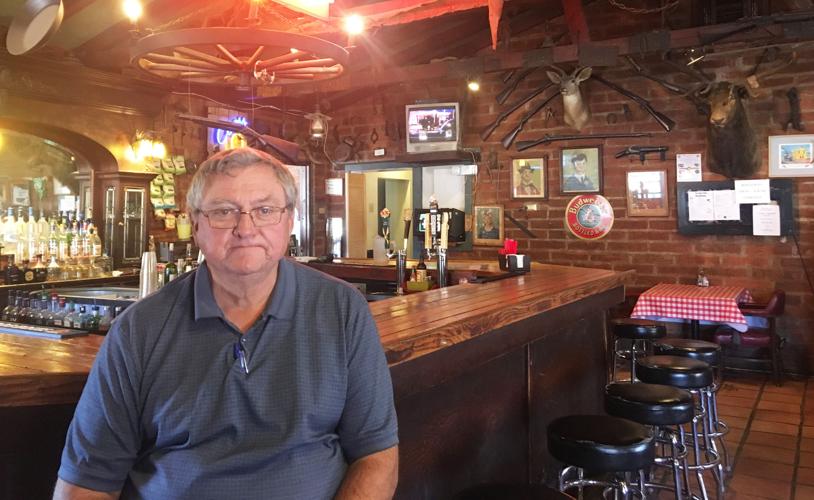
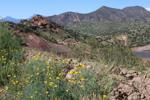
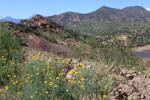


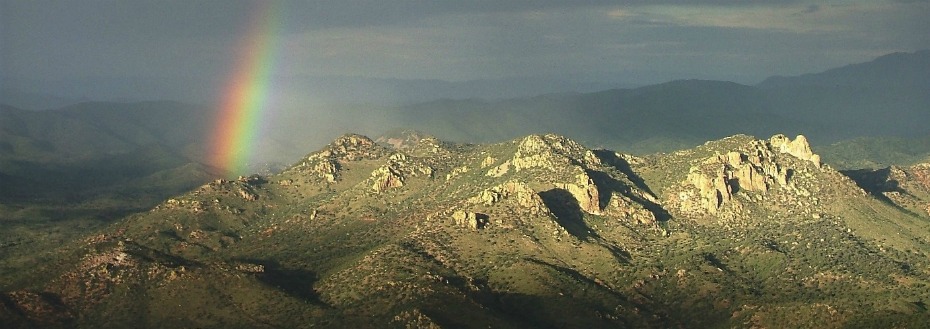

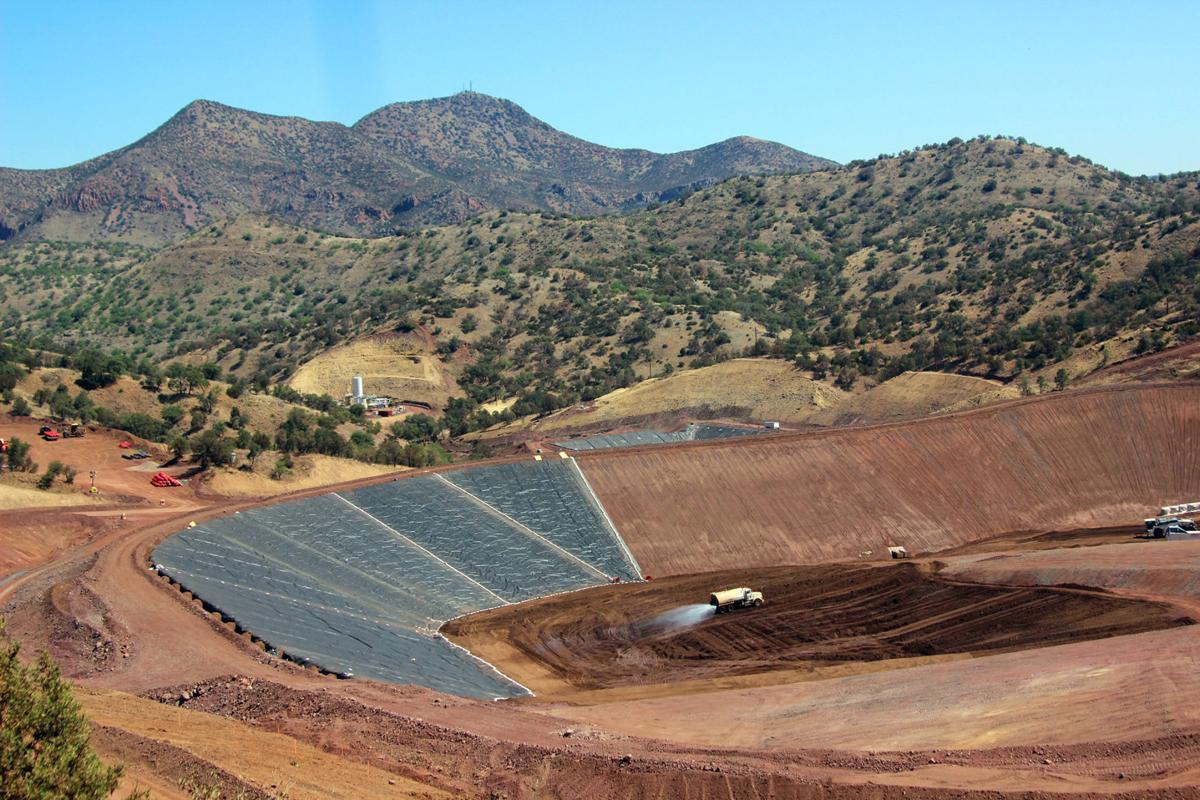




No comments:
Post a Comment